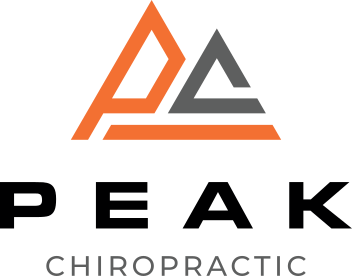If you've been struggling with back pain, you might find chiropractic adjustments to be a practical solution. These adjustments can realign your spine and alleviate nerve pressure, leading to improved mobility and reduced discomfort. But that's just the beginning; there are several other ways adjustments contribute to your back health. Understanding these methods can greatly influence your recovery journey. Curious about how these approaches can work together to create lasting relief? Let's explore the ten ways adjustments can transform your experience with back pain.
Chiropractic Adjustments
When it comes to managing back pain, chiropractic adjustments can offer significant relief. These adjustments involve specific spinal manipulations designed to realign your vertebrae, ensuring your spine functions effectively. By correcting misalignments, chiropractors help restore your body's natural balance, which can alleviate the pressure on nerves that often leads to discomfort.
During your appointment, your chiropractor will assess your spine and identify areas of restriction or misalignment. You might feel some tension release as they apply targeted pressure to specific vertebrae. Many patients report a feeling of immediate relief after adjustments, with reduced pain and improved range of motion.
Chiropractic adjustments not only focus on the spine but also consider the surrounding tissues. By enhancing joint mobility and reducing muscle tension, these adjustments can create a domino effect of healing throughout your whole body. This holistic approach addresses the root causes of your back pain rather than merely masking the symptoms.
It's important to note that consistency is key. Regular visits can help maintain proper alignment and support ongoing recovery. You may also receive personalized recommendations for exercises or lifestyle changes to complement your treatment, enhancing overall effectiveness.
Incorporating chiropractic care into your pain management strategy can lead to long-term benefits. If you're struggling with back pain, consider scheduling an appointment with a qualified chiropractor. You'll likely find that these adjustments provide a pathway toward a more pain-free life.
Physical Therapy Techniques
When it comes to back pain, physical therapy techniques can make a real difference.
You'll find that manual therapy approaches, combined with tailored exercise rehabilitation programs, can markedly enhance your recovery.
Let's explore how these methods work together to relieve pain and improve your mobility.
Manual Therapy Approaches
Manual therapy approaches play an essential role in managing back pain through hands-on techniques that target specific tissues. These methods, often administered by skilled physical therapists, can effectively reduce pain and improve mobility.
You might experience techniques like manual manipulation, where the therapist applies controlled pressure to the spine and surrounding muscles, helping to restore proper alignment and function.
Another common technique is soft tissue mobilization, which focuses on loosening tight muscles and fascia. This can ease tension and enhance blood flow, promoting healing.
You'll also find joint mobilization beneficial; it involves gently moving your joints to improve range of motion and relieve stiffness.
By engaging in these manual therapy approaches, you can expect to feel an immediate reduction in pain and increased flexibility. The benefits often extend beyond the treatment session, leading to long-term relief when combined with other therapeutic practices.
Don't hesitate to discuss your specific pain points with your therapist, as they'll tailor the techniques to your individual needs.
With consistency and dedication to these manual therapies, you're likely to find significant improvements in your back pain management journey.
Exercise Rehabilitation Programs
Exercise rehabilitation programs are essential in managing back pain, combining targeted physical therapy techniques to strengthen and stabilize your spine. These programs focus on improving flexibility, strength, and endurance, ultimately enabling you to return to daily activities with less pain.
Here are some key benefits of engaging in a structured exercise rehabilitation program:
- Improved Strength: Strengthening core muscles supports your spine, reducing strain and discomfort.
- Enhanced Flexibility: Regular stretching can alleviate tightness and improve your range of motion.
- Pain Reduction: Consistent exercise releases endorphins, which act as natural pain relievers.
When you participate in an exercise rehabilitation program, a skilled therapist will tailor a regimen specifically for you. This may include a mix of aerobic conditioning, strength training, and mobility exercises.
You'll likely start with low-impact activities, gradually increasing intensity as your body adapts. Remember, consistency is key. By sticking to your program, you can develop healthier movement patterns and reduce the risk of future injuries.
Don't hesitate to consult a physical therapist to find the right exercises that suit your individual needs and help you reclaim a pain-free life.
Posture Correction
Posture correction is essential for maintaining proper alignment and preventing back pain.
By setting up an ergonomic workstation and incorporating daily stretching techniques, you can greatly improve your posture.
Let's explore how these adjustments can benefit your back health.
Importance of Proper Alignment
Many people underestimate the significance of proper alignment when it comes to back pain relief. Maintaining good posture isn't just about looking confident; it directly impacts your spine's health and overall well-being. If you want to alleviate discomfort, focusing on alignment is essential. Here's why:
- Reduces strain: Proper alignment minimizes stress on your muscles and ligaments, allowing them to function efficiently.
- Enhances circulation: Good posture improves blood flow, ensuring your muscles receive the nutrients they need for recovery.
- Promotes mobility: Staying aligned supports your joints, making everyday movements smoother and less painful.
When you prioritize alignment, you're taking a proactive step towards a pain-free life.
Consider your daily habits—whether you're sitting, standing, or moving. Make subtle adjustments, like keeping your shoulders back and your chin up, to start feeling the benefits.
You mightn't notice immediate changes, but consistency will yield significant improvements over time.
Embrace the importance of proper alignment and watch as your back pain subsides, leaving you more energized and ready to tackle your day. Your spine will thank you!
Ergonomic Workstation Setup
Creating an ergonomic workstation is essential for maintaining proper alignment and reducing back pain. Start by adjusting your chair. Verify it's at a height where your feet rest flat on the floor, and your knees are level with your hips. This position helps distribute your weight evenly and supports your lower back.
Next, position your monitor at eye level, about an arm's length away. This setup encourages you to sit up straight and reduces strain on your neck. If you're using a laptop, consider an external keyboard and mouse to maintain this alignment.
Your desk should allow enough space for your elbows to stay close to your body, forming a 90-degree angle. This minimizes shoulder tension and supports good posture.
Don't forget to keep essential items within easy reach to avoid unnecessary twisting or stretching.
Finally, remember to take breaks throughout the day. Standing up and moving around not only relieves pressure on your back but also helps maintain your focus.
Daily Stretching Techniques
Incorporating daily stretching techniques can greatly improve your posture and alleviate back pain. When you regularly stretch, you enhance flexibility, reduce muscle tension, and promote better spinal alignment.
Here are some key techniques you can easily fit into your routine:
- Cat-Cow Stretch: This dynamic stretch helps mobilize your spine and relieve tension in your back.
- Child's Pose: A restorative position that stretches your lower back and calms the mind.
- Chest Opener Stretch: Counteracts the forward hunch from sitting, expanding your chest and shoulders.
To get started, dedicate just a few minutes each day. Begin with gentle stretches, focusing on areas that feel tight.
Hold each position for 15-30 seconds, breathing deeply to enhance relaxation. As you progress, you can increase the duration and intensity of your stretches.
Stretching Exercises
When it comes to alleviating back pain, stretching exercises play an essential role in enhancing flexibility and reducing muscle tension. Incorporating a regular stretching routine can help you release tight muscles, improve your range of motion, and ultimately lead to a more comfortable daily life.
To get started, focus on a few key stretches that target the back, hips, and legs. The child's pose is a gentle stretch that helps elongate your spine and soothes tension. Start on your hands and knees, then gently sit back on your heels while reaching your arms forward. Hold this position for 20-30 seconds, breathing deeply to enhance relaxation.
Another effective stretch is the seated forward bend. Sit on the floor with your legs stretched out in front of you. Inhale deeply, then exhale as you reach toward your toes, keeping your back straight. Aim to hold this stretch for about 30 seconds, feeling the gentle stretch along your hamstrings and lower back.
Don't forget about the cat-cow stretch, which helps mobilize your spine. Start on your hands and knees, exhaling as you round your back (cat pose) and inhaling as you arch it (cow pose). Repeat this for several cycles, focusing on your breath.
Remember to listen to your body. If a stretch feels uncomfortable or painful, ease back and modify the movement. Consistently practicing these stretching exercises can greatly help alleviate back pain and improve your overall well-being.
Strengthening Core Muscles
Building on the importance of stretching, strengthening your core muscles can greatly contribute to back pain relief and support. A strong core stabilizes your spine, improves your posture, and enhances overall body mechanics. When your core is strong, it reduces the strain on your back, allowing for better movement and reduced discomfort.
Here are some key benefits of a strong core:
- Improved Posture: A strong core helps you maintain proper alignment, which can reduce the pressure on your back.
- Enhanced Balance: Core strength enhances your stability, making daily activities easier and reducing the risk of injury.
- Reduced Strain: A strong core takes the load off your back muscles, which can alleviate pain and discomfort.
To start strengthening your core, incorporate exercises that target your abdominal muscles, obliques, and lower back. Planks, bridges, and Russian twists are excellent choices. Aim for a balanced routine that challenges your core from multiple angles.
You don't need to spend hours at the gym; even short, consistent workouts can make a significant difference. As you progress, focus on maintaining good form to maximize benefits and minimize the risk of injury.
Listen to your body, and don't hesitate to adjust the intensity or modify exercises as needed. Remember, strengthening your core is a journey, and with persistence, you'll notice improvements not just in your back pain, but in your overall strength and stability.
Ergonomic Workspaces
Creating an ergonomic workspace is essential for reducing back pain and enhancing productivity. When you spend long hours at a desk, the right setup can make all the difference.
Start by adjusting your chair so that your feet rest flat on the floor, with your knees at a 90-degree angle. This position helps maintain proper posture and reduces strain on your back.
Next, position your computer monitor at eye level. You shouldn't have to tilt your neck to see the screen. Place it about an arm's length away to prevent eye strain. If you're using a laptop, consider investing in a separate keyboard and mouse to maintain a comfortable arm position. Your wrists should be straight while typing, and your elbows should stay close to your body.
Don't forget about your desk height. Ideally, it should allow your forearms to be parallel to the ground when you're seated. If possible, consider a sit-stand desk that lets you alternate between sitting and standing throughout the day. This change can greatly reduce discomfort and promote better circulation.
Finally, take regular breaks. Standing up, stretching, or walking around for a few minutes every hour can help alleviate tension and prevent stiffness.
These simple adjustments in your workspace can lead to a noticeable decrease in back pain, allowing you to work more efficiently and comfortably. Remember, your workspace should support your body, not hinder it.
Heat and Cold Therapy
For many dealing with back pain, heat and cold therapy can be effective tools for relief. These methods are simple, accessible, and can make a significant difference in how you feel. By understanding when and how to use them, you can target your pain more effectively.
Here are a few things to take into account when using heat and cold therapy:
- Heat therapy helps relax and loosen tissues, improving blood flow to the affected area.
- Cold therapy numbs sharp pain and reduces inflammation, especially after a recent injury.
- Alternating between heat and cold can provide a thorough approach to managing discomfort.
When using heat therapy, you can opt for heating pads, warm baths, or heat wraps. Just be cautious not to apply heat for too long to avoid burns. Aim for about 15-20 minutes at a time.
Cold therapy, on the other hand, can be achieved with ice packs or cold compresses. Apply them for about 10-15 minutes, taking breaks in between to prevent skin damage.
It's essential to listen to your body. If one method isn't providing relief, don't hesitate to switch to the other.
Mindfulness and Relaxation
Mindfulness and relaxation techniques can play an essential role in managing back pain. When you're aware of your body and the sensations you're experiencing, you can better address the tension that contributes to discomfort. Incorporating mindfulness into your daily routine helps you stay present, reducing stress and promoting a sense of calm.
Start by setting aside a few minutes each day for mindfulness practice. Sit comfortably, close your eyes, and focus on your breath. Notice how your body feels, paying special attention to any tightness or discomfort in your back. Acknowledge these sensations without judgment, allowing them to be part of your experience. This practice can help you cultivate a deeper awareness of your body, which can lead to better pain management.
Relaxation techniques, such as deep breathing and progressive muscle relaxation, can also alleviate back pain. Deep breathing encourages oxygen flow and calms your nervous system, while progressive muscle relaxation involves tensing and then relaxing different muscle groups.
As you engage in these techniques, visualize releasing tension from your back and surrounding muscles.
Combining mindfulness with relaxation strategies empowers you to take control of your pain. By regularly practicing these techniques, you'll likely notice an improvement in your overall well-being and a reduction in back pain.
Nutritional Support
When it comes to managing back pain, what you eat plays an essential role.
Incorporating anti-inflammatory foods, staying hydrated, and ensuring you get the right nutrients can greatly support your spinal health and aid in muscle repair.
Let's explore how these dietary choices can make a difference in your recovery.
Anti-inflammatory Foods Importance
Incorporating anti-inflammatory foods into your diet can greatly impact your back pain management. These foods help reduce inflammation in your body, which can lead to less pain and discomfort. By making simple changes to what you eat, you can support your overall health and wellness.
Consider adding these anti-inflammatory foods to your meals:
- Fatty fish like salmon and mackerel, rich in omega-3 fatty acids
- Leafy greens such as spinach and kale, packed with antioxidants
- Berries, which are high in vitamins and anti-inflammatory compounds
Including these foods not only helps with pain relief but also boosts your immune system and enhances your overall energy levels.
You might find that a diet rich in these ingredients leads to improved mobility and a better quality of life. Start small by incorporating one or two of these options into your daily meals, and pay attention to how your body responds.
With consistent effort, you'll likely notice a positive difference in your back pain and overall well-being. So, take charge of your diet, and let anti-inflammatory foods work their magic.
Hydration and Spinal Health
Staying properly hydrated plays a significant role in maintaining spinal health, especially when managing back pain. Your spine relies on adequate hydration to keep the discs between your vertebrae functioning efficiently. These discs act as shock absorbers, and when they lack water, they can become less effective, leading to increased pressure on your spine and potential pain.
Drinking enough water helps to maintain the elasticity and flexibility of these discs, reducing the risk of injury and discomfort. Dehydration can also lead to muscle stiffness, which might exacerbate back pain. When your muscles are tight, they place additional strain on your spine, creating a cycle of pain.
To support your spinal health, aim for at least eight glasses of water a day, or more if you're active. Pay attention to your body's signals—thirst is a clear indicator that you need more water.
Incorporating hydrating foods, like fruits and vegetables, can further boost your hydration levels. By prioritizing hydration, you're taking a simple yet effective step towards alleviating back pain and promoting overall spinal well-being.
Nutrients for Muscle Repair
Muscle repair is essential for anyone dealing with back pain, and the right nutrients can make a significant difference. You need to focus on specific vitamins and minerals that support muscle recovery, helping to alleviate discomfort and promote overall health.
Here are three key nutrients to incorporate into your diet:
- Protein: Vital for muscle repair and growth, protein sources like lean meats, fish, eggs, and plant-based options like legumes help rebuild damaged muscles.
- Omega-3 Fatty Acids: Found in fish, flaxseeds, and walnuts, omega-3s reduce inflammation, which can ease pain and promote healing in your back muscles.
- Magnesium: This mineral plays a fundamental role in muscle function and recovery. Incorporating foods like spinach, almonds, and whole grains can help maintain adequate magnesium levels.
Regular Movement and Activity
Engaging in regular movement and activity is vital for managing back pain effectively. When you stay active, you strengthen the muscles that support your spine, improving your overall posture and reducing discomfort. It might seem counterintuitive to move when you're in pain, but gentle activities can actually promote healing and flexibility.
Start by incorporating low-impact exercises into your daily routine. Walking, swimming, or cycling can be excellent options. These activities help increase blood flow to your muscles, which aids in recovery. Even simple stretches can make a significant difference, easing tension and improving mobility. Aim for at least 30 minutes of moderate activity most days, but listen to your body and adjust as needed.
Don't forget about strengthening exercises. Focus on your core, as a strong core supports your back and reduces strain. Exercises like planks, bridges, and modified sit-ups can be beneficial. Gradually increase intensity as your strength improves.
It's also important to break up long periods of sitting or standing. Try to stand, stretch, or walk every hour to keep your muscles engaged. Consider setting a timer as a reminder.
Lastly, remember that consistency is key. Regular movement not only alleviates back pain but also boosts your mood and energy levels. You'll not only feel better physically but also mentally, making it easier to tackle daily challenges.
Conclusion
Incorporating chiropractic adjustments into your back pain management plan can make a significant difference. These adjustments not only realign your spine but also enhance blood flow, reduce stiffness, and address the root causes of discomfort. When combined with other techniques like physical therapy, posture correction, and regular movement, you'll boost your chances of long-term relief. So, don't hesitate to seek out these treatments and take proactive steps toward a pain-free life. Your back will thank you!



